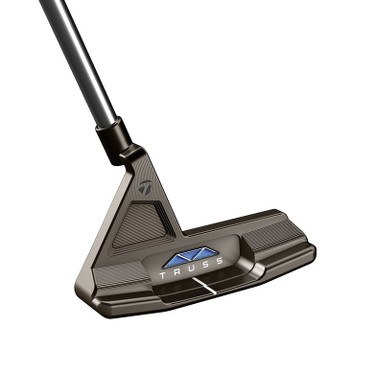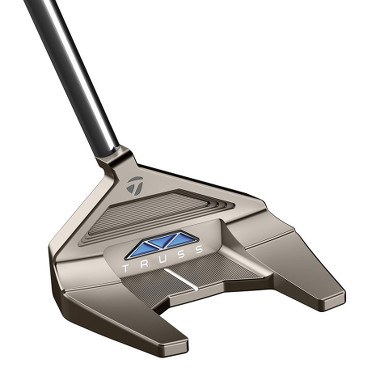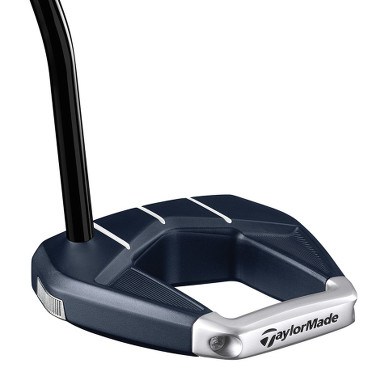
TaylorMade decided to enrich its top-selling line of putters by introducing two new items in the Spider family: the Truss and the Spider S. Both the Truss and Spider S feature a mallet design, and they’re designed to improve putting results by annihilating miss-hit putts. Usually speaking, miss-hit putts occur when you fail to hit the ball with the center of the putter’s face. The new Truss and Spider S promise to improve your miss-hit putts by implementing a two-step solution.
The Spider S is using a classic trick to boost stability by increasing moment of inertia, boasting a large-mallet design that promotes a more stable face and better energy transfer to the ball, which ends up in more consistency overall. Another solution to combat miss-hit putts is to radically change the putter architecture, and that approach is evident in smaller models. The new Truss line of putters gets its name from the Y-shaped beam structure, which is a common design trait in tennis rackets. There are no less than 4 models in the Truss line-up and they are all designed with a triangular hosel, wider than usual, which is aimed at improving stability in the head while keeping the general shape, size and look at address of center/shafted and traditional heel/blade and small mallets.

According to the senior vice president of research, design, and engineering at TaylorMade Todd Beach, stability is a function of design, or shape as he puts it (pun intended):
“MOI is designed to mitigate that variability and inconsistency in a golfer’s stroke. But you’re so stuck because MOI is so driven by geometry that you can’t get those looks and get the same MOI. So Truss is a different way to attack that.”
As per the company's own research, the Truss heel and center-shafted options make for a sixty to eighty percent less face deflection compared to a regular/classic putter. Here’s Paul Demkovski, TaylorMade’s senior product development engineer:
“There’s a little more energy transfer because of that stiffer structure so it’s really no different in the benefits you would see from a high inertia putter. By having those two contact points spread out you’re stiffening up that structure as a result. That’s giving us a better sound and feel than what we’ve had in blade structures.”

Basically, Paul Demkovski claims that the thinned hosel structure in the new Truss putters reduces the amount of the putter blade that is “unsupported” with more of the topline directly connected to the hosel’s mass, or something along these lines. The TaylorMade Truss family of putters consists of 4 models: TB1 (a heel-shafted blade), TB2 (a center-shafted blade), TM1 (a heel-shafted mallet with parallel wings that extend back from the heel and toe) and TM2 (a similarly shaped center shafted mallet), and each of the Truss putter models comes with the company’s proprietary PureRoll face insert, with specially designed grooves that improve early forward roll.
It’s worth mentioning that the Truss putters are designed with an emphasis on traditional shapes and improving overall stability, while the Spider S is TaylorMade’s futuristic take on a cutting-edge mallet, built using state of the art composite materials and geometry to improve stability on off-center hits. This high moment of inertia putter in a mallet-shape uses an aluminum body with heel and toe weights (48 gram) in the sole and a tungsten bar located in the rear which modifies weight as per shaft length. The Spider S putter also comes with a Surlyn grooved “PureRoll” face insert, which is thicker than usual, and aimed at promoting initial forward roll. Both the Spider S and the Truss putters are already available in North America at all major retailers, for $300 (the Truss) and $350 respectively (the Spider S).





